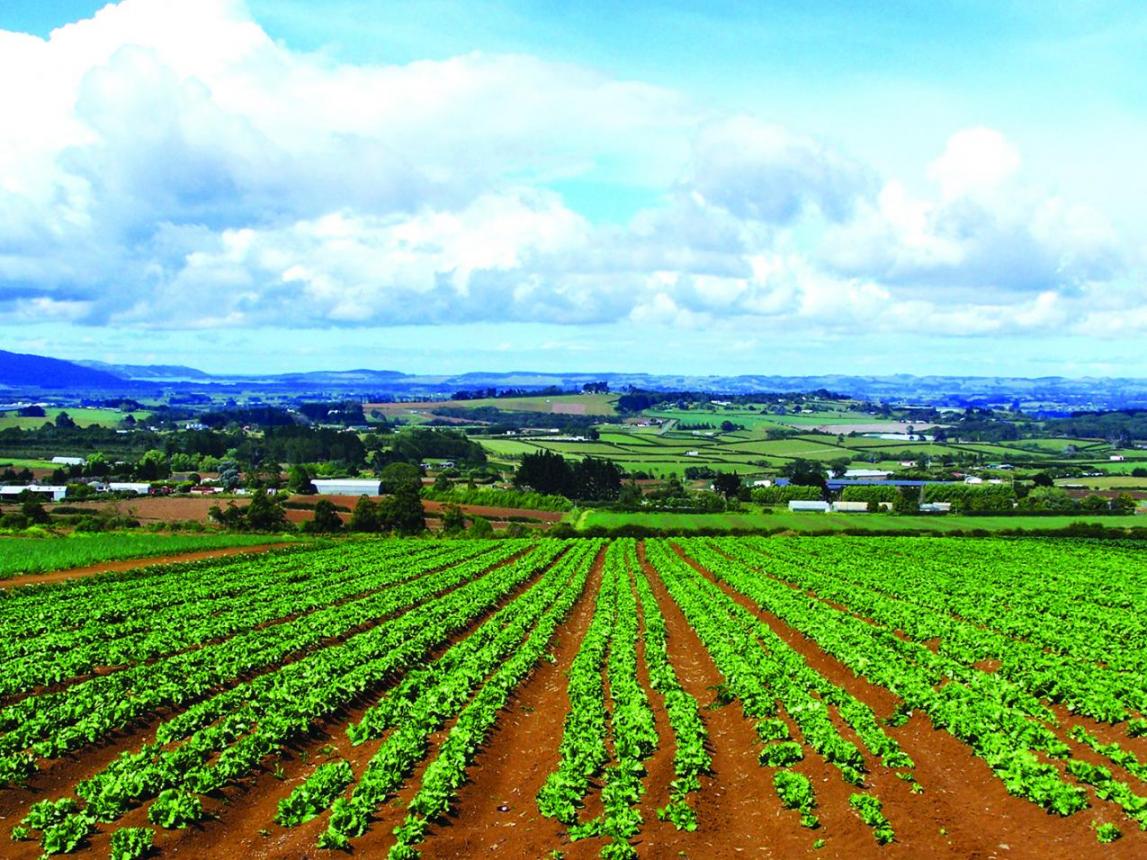Iran and France have signed six cooperation agreements for expansion of trade and exchange of technical knowledge in areas of animal husbandry, fish farming and organic gardening.
The agreements were signed between Iran's deputy minister of agriculture, Abbas Keshavarz and head of the international relations department at France’s General Directorate of Agriculture, Food and Territories, Patrice de Laurens, as part of the first Iran-France agricultural meeting in Tehran on Wednesday.
Under the agreement, Iran will export organic food products to the EU country and import genetically modified fruit trees and grapevines.
The two sides have also agreed to jointly establish Iran's first aquaculture farm in the Persian Gulf island of Qeshm within a month and develop a trout breeding research center in the Iranian city of Kelardasht near the Caspian Sea.
Iran will also import genetically-modified cattle from France, which is expected to help improve the productivity of Iran's livestock, said Keshavarz.
Patrice de Laurens, heading the French delegation to Tehran, said the two countries can exchange expertise on facing climate change and food security challenges.
“Iran is one of the earliest agrarian civilizations ranked among the world's top ten countries in fruit production," said de Laurens.
> Agrofood 2015
Foreign traders are showing rising interest in doing business with Iran as nuclear talks between Tehran and the P5+1 (the five permanent members of UN Security Council plus Germany) head down the home stretch.
As many as 236 foreign companies active in the food and agricultural industry recently participated in the 22nd edition of Iran's International Agricultural Trade Fair (Agrofood 2015) which took place at Tehran International Fairground on May 26-29.
More than 710 domestic companies and 236 foreign exhibitors from 23 countries, including Austria, China, France, Germany, India, Italy and Turkey, participated in the event. The number of foreign companies attending the exhibition showed a 44% increase compared with the previous year's edition.
Protein and meat products, dairy products, prepared and semi-prepared foods, canned foods, nuts and dried fruits, spices, condiments and beverages, flour, sugar and sugarcane, oil products, gardening and agricultural equipment, irrigation and greenhouse systems were some of the commodities displayed in the exhibition.
Organized by Germany's Fairtrade and their Iranian partner Palar Samaneh, in cooperation with Trade Promotion Organization of Iran and Iran International Exhibitions Company, Agrofood 2015 is aimed at introducing Iran's capabilities and advancements in areas of food and agriculture, familiarizing visitors with the latest technological achievements in domestic and international agricultural domain and exchange of technical knowledge and experience between participants.
According to the German organizers, Iran's agricultural sector is ranked among the top three markets in the Middle East, besides Saudi Arabia and Iraq.
“The record participation [in Agrofood 2015] is due to an improved business environment as the overall EU trade with Iran increased by 21% to 7.5 billion euros in 2014. And of course there is the prospect of a nuclear deal. Some even anticipate a ‘gold rush’ once Iran's 77-million strong market opens up," said Martin Marz, the managing director of Fairtrade.
According to Germany's Food Processing and Food Packaging Machinery Association (VDMA), German deliveries of food processing and packaging machinery to Iran more than doubled in 2014.
“Due to the sanctions, many investments were postponed in recent years. Iran needs to modernize its food and beverage industry, and to continue to expand it to meet the growing demand of the population for food and drink. The country offers great potential not least because of its growing and young population, increasing urbanization, a growing middle class, working women and the spread of organized trade in supermarkets and hypermarkets,” said VDMA advisor Vera Fritsche.
> Future of Agribusiness
Business Monitor International (BMI) recently published Iran's agribusiness report 2015, including five-year forecasts on grain, rice, sugar, dairy and livestock industries until year 2019.
Iran will produce $47 billion worth of agricultural products by the end of the year, experiencing an average annual growth of 2.9% in the next five years, the report forecasts.
Wheat production increases by 6.1% on the 2013-14 level to 15.1 million tons by 2018-19, owing to the modernization of technology, while estimating that rice production grows 9.5% to 1.82 million tons during the period.
Sugar consumption is expected to grow by 18.2% to 2.5 million tons, while dairy output is forecasted to expand moderately by 15.9% on the 2013-14 level to 9 million tons.
In the livestock sector, the forecast to 2018-19 envisages poultry production expanding by 15.9% on the 2013-14 level to 927,400 tons, driven by domestic demand and the effects of increased investment. For beef and veal, the report predicts production expanding by 7.7% to 257,600 tons during the period.
A diverse landscape and climate, well-developed sugar-processing and milk production infrastructure are mentioned in the BMI report as strengths of agribusiness in Iran. This is while a history of periodic droughts, reliance on oil exports for investment in the agricultural sector and a strong state presence in agriculture are viewed as major weaknesses.


